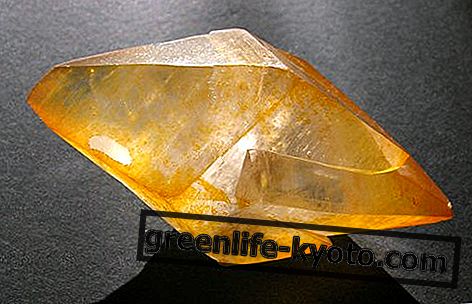
Jerusalem artichoke is a perennial herbaceous plant, which can also grow spontaneously in the Mediterranean region.
It is formed by stems that, when ripe, reach a height of three meters, and yellow flowers that are very similar to yellow daisies.
The edible part of the Jerusalem artichoke is made up of the tuberous root, very similar to that of ginger and potato, with a flavor reminiscent of the artichoke.
Let's see how to cook Jerusalem artichoke in 3 light and vegan recipes.
3 light recipes with Jerusalem artichoke
Salad with raw Jerusalem artichoke
The simplest and healthiest way to discover the Jerusalem artichoke is to eat it raw in salads : finely sliced and seasoned with the classic green salad, cold, seasoned with a little oil and a few drops of lemon, it makes you taste this tuber with a particular consistency and flavor.
Consuming it raw also keeps the nutritional principles intact, and the addition of lemon makes the inulin content more bioavailable.
Vegan meatballs with Jerusalem artichoke
Another way to use Jerusalem artichokes is to use it as a substitute for potatoes in meatballs and croquettes ; in this way the starchy contribution of the prepared dish decreases, making it suitable also for those with diabetes problems. The preparation is very simple.
Ingredients for 6 meatballs:
> 300 gr of Jerusalem artichokes
> 2 shallots
> tofu or other vegetable cheese
> 2 tablespoons of curry
> a tablespoon of olive oil
> rice flour
Preparation : wash and clean the Jerusalem artichoke, peel it and grate it. Cut the shallots finely. Combine the whole in a bowl, crumble the tofu (you can use it both natural and with orbs or smoked) or cut the vegetable cheese into small slices, add a pinch of salt, oil and curry, and stir. Get a fairly firm batter, enough to make balls of about 4 cm in diameter. Form the croquettes with your hands, roll with rice flour and bake at 180 degrees for about 20 minutes.
You can add other vegetables to the basic preparation of the meatballs.
Baked Jerusalem artichoke? Here's how to do it
Velvety topinambur and artichokes
Jerusalem artichoke is a perennial plant but is preferably harvested in autumn and winter . Despite the winter seasonality it is however possible to find it during all the months of the year .
If in the warm months it can be tasted in salads and cold dishes of raw food, in colder periods the Jerusalem artichoke lends itself to velvety and soups.
Combining it with the artichoke in spring allows to amplify the taste of both vegetables and the purification properties of the blood.
Ingredients for 4 people:
> 500 gr of Jerusalem artichokes
> 4 whole artichokes or 6 artichoke hearts> ½ liter of water
> 1 shallot
> a tablespoon of olive oil
> pepper
> a pinch of salt
Preparation : boil the water. Separately, cut the pans and fry them in a little oil. Peel the Jerusalem artichokes and clean the artichokes and slice them finely, add to the dish and sauté briefly. Add the boiling water little by little, increasing the quantity according to the consistency preferences.
Add salt or a vegetable broth preparation without glutamate or yeast. Boil for 30 minutes. With the heat off, adjust the salt, add the pepper, and blend with an immersion blender. Season with a drizzle of raw oil, a sprinkling of turmeric, and serve hot.
Enjoy your meal!













